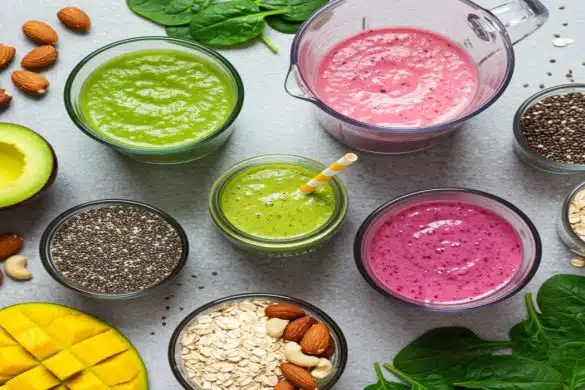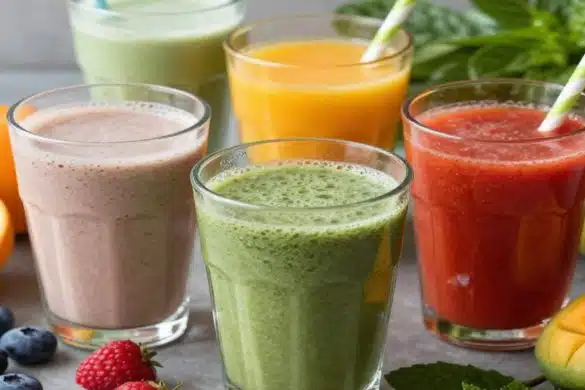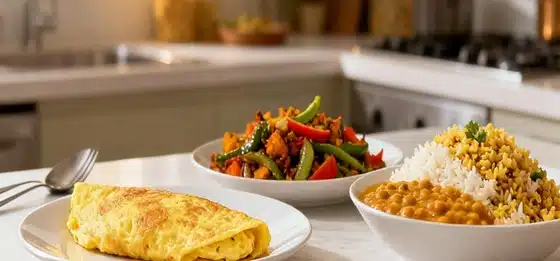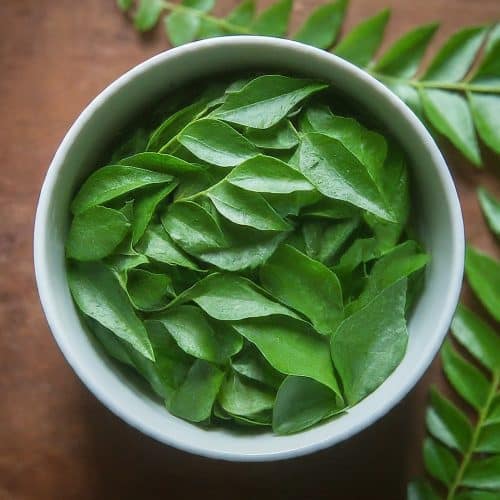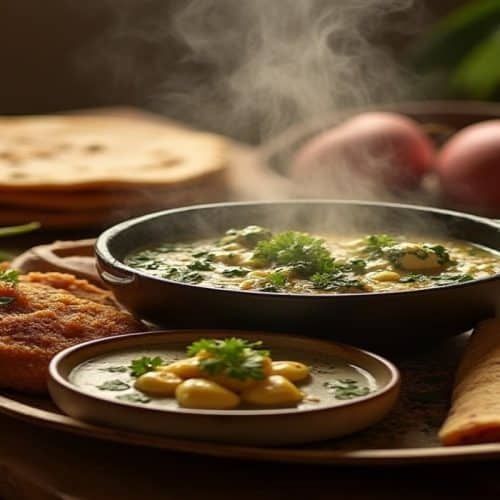The ongoing debate over whether ghee or butter is the superior fat has many considering the associated health benefits, culinary uses, and the potential drawbacks of each. Either way, one thing we can all agree on is the irresistibly rich flavour they add to our food.
Ghee, a form of clarified butter originating from India, has become increasingly popular for its lactose and casein-free properties. Meanwhile, butter, a dietary staple in many cultures for centuries, has maintained its reputation as a versatile and indispensable fat in culinary applications.
This blog aims to shed light on the ghee vs. butter debate by breaking down their nutritional content, health benefits, potential drawbacks, and culinary uses so that at the end of the read, you can decide for yourself which one to opt for.
Ghee vs. Butter: The differences
Although ghee and butter share a dairy origin, the method of preparation introduces significant differences. Ghee, typically made from cow’s milk, is made by heating and filtering regular butter to remove milk solids and water, leaving behind an oil that’s pure butterfat. This process makes ghee lactose-free and high in fat concentration.
On the other hand, butter, sourced directly from churned cream, contains all parts of the milk, including proteins and sugars. Let’s learn more about the differences they both carry.
Origin and preparation
Ghee, originated from the Indian subcontinent, is central to many Asian cuisines and Ayurvedic medicine. The process of making ghee involves heating butter until its milk solids are separated and caramelised before subsequent removal. The result is a rich, golden oil with a higher concentration of fat that is stable at room temperature and doesn’t burn as quickly as butter due to its higher smoke point.
Butter, alternatively, has been a staple food source across several civilisations for millennia. Usually made from cow’s milk, it’s produced by churning milk or cream until the fat separates from the liquid, resulting in a semisolid texture.
The difference in their process of production gives each a distinctive character, influencing their nutritional content, taste, and culinary uses.
Nutritional content
When comparing the nutritional profiles of ghee and butter, it’s interesting to note that ghee has more calories and fat per serving than butter, primarily owing to its preparation process, where water and milk solids are removed, leaving pure fat.
Here’s a detailed comparison:
| Nutritional Content per tbsp | Ghee | Butter |
| Calories | 123 | 100 |
| Total Fat | 14 g | 11 g |
| Saturated fat | 10 g | 7 g |
| Monounsaturated fat | 3.5 g | 3 g |
| Polyunsaturated fat | 0.5 g | 0.4 g |
That said, ghee and butter both contain essential nutrients like vitamins A and E and provide a source of essential fatty acids beneficial for overall health.
Taste and texture
Taste and texture often play a significant role in determining the suitability of ghee and butter for various culinary applications. With its soft, creamy composition and slightly sweet taste, butter perfectly complements pastries, cookies, and sauces.
On the other hand, ghee offers a distinctive buttery flavour with a unique nutty note, courtesy of the caramelised milk solids during its preparation. Furthermore, when heated, ghee’s liquid consistency makes it a versatile choice for pan-frying, sautéing, and roasting.
Additionally, ghee’s robust flavour profile can enhance the taste of curries, stews, and roasted vegetables, while the creaminess of butter shines in bakery items and mild-flavoured dishes.
What are the health benefits and concerns of Ghee and Butter?
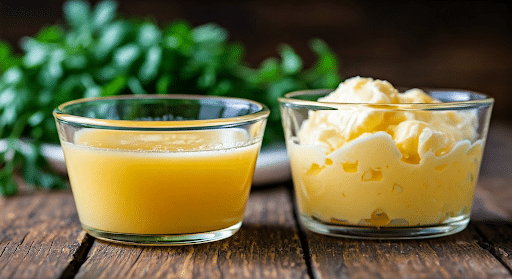
Comparison of ghee and butter
Both ghee and butter bring unique health benefits to the table, but they are not without their concerns. Let’s check their pros and cons in the following sections.
Pros of ghee
There are several benefits of ghee, making it an appealing alternative to regular butter.
Here are a few:
- Lactose and Casein-Free: Ghee lacks lactose and casein, making it suitable for individuals with dairy sensitivities or intolerance. They can freely incorporate ghee into their healthy diet without experiencing the abdominal discomfort associated with consuming these dairy elements.
- High Smoke Point: Ghee’s high smoke point of 485°F makes it a better option for high-heat cooking methods like frying and sautéing. It doesn’t burn readily, retaining its nutritional value even at high temperatures.
- Rich in Fat-Soluble Vitamins: Ghee is a bountiful source of vitamins A, E, and K, essential for maintaining good vision, boosting immunity, and improving skin health.
- Supports Digestive Health: Ghee has butyrate, an essential short-chain fatty acid that promotes gut health and reduces inflammation.
Pros of butter
Despite the recent spotlight on ghee, the perks of good old butter should be noticed.
Here’s what butter brings to the table:
- Packed with Nutrients: Butter is rich in fat-soluble vitamins like A, E, and K2. It also contains Conjugated Linoleic Acid (CLA), a fatty acid that might have cancer-fighting properties and aids in weight loss.
- Boosts Eye Health: The vitamin A content in butter aids in maintaining eye health, protecting against conditions like cataracts and macular degeneration.
- Provides Healthy Fats: Butter provides healthy fats necessary for the proper functioning of the brain and nervous system.
- Enhances Flavour: Butter has a creamy and delicious taste that enhances the flavour of a wide variety of dishes, mainly baked goods.
Potential drawbacks of ghee
While ghee is a nutritional powerhouse, it’s not without its drawbacks and should be consumed mindfully:
- High in Saturated Fat: Ghee has a high concentration of saturated fat. Overconsumption of saturated fat can increase the level of bad cholesterol in the body, potentially leading to heart diseases.
- High Caloric Content: Just like any fat, ghee is calorie-dense, with each tablespoon providing around 120 calories. Overconsumption can lead to weight gain and obesity.
- Potential Allergen: Despite having a lower risk of allergy due to the insignificant amounts of casein, individuals with severe milk allergies might still react to ghee.
- Quality Control: The quality of ghee dramatically depends on the quality of the butter from which it’s made. Choosing ghee from grass-fed, organic sources is crucial.
Potential drawbacks of butter
As much as we love the taste and texture of butter, it has particular potential drawbacks:
- High Cholesterol: With high levels of cholesterol, consuming butter in large quantities can lead to an increase in LDL or “bad” cholesterol, a key risk factor for heart disease.
- Lactose Content: Butter contains lactose, which might trigger reactions in individuals with lactose intolerance, leading to symptoms like bloating and indigestion.
- Calorie-Dense: Just like ghee, butter is high in calories. Overusing it can contribute to a calorie surplus and unintentional weight gain.
- Low Smoke Point: Butter has a lower smoke point compared to ghee. It can burn quickly when exposed to high heat, producing a bitter taste and potentially harmful compounds.
What are the culinary uses of Ghee and Butter?
The difference in their preparation process lends ghee and butter different profiles, influencing their culinary uses significantly. The following section will briefly explain how it is to bake and cook with ghee and butter. Lastly, it will briefly compare the smoking points of the two.
Baking and cooking with ghee
Whether adding a deep caramelised flavour to vegetables or giving homemade popcorn a delectable twist, ghee’s versatility in the kitchen is commendable, primarily when used on low heat. When swapping out butter for ghee in baked goods, use a 1:1 ratio. However, ghee’s unique taste might slightly alter the dish’s flavour profile. Ghee provides a moist and tender texture to cakes and bread due to its higher fat content.
Ghee exhibits a high smoke point, making it suited for high-temperature cooking methods like roasting and pan-searing. Try it as a base for your next sauté or stir-fry – it won’t burn or smoke under high heat, making cooking a breeze while lending a robust, aromatic flavour to your dishes.
Baking and cooking with butter
Not just a spread for your morning toast, butter’s culinary domain extends way beyond. The creamy consistency and subtle sweetness of butter make it an excellent component in baked goods, imparting a moist, fluffy texture and rich flavour to cakes, cookies, and pastries.
Its lower smoke point (compared to ghee) makes butter a go-to for cooking at low-to-medium heat. Sautéing vegetables, making pan sauces, or creating light dishes, butter adds a delicate, indulgent touch without overpowering the dish’s original tastes.
Heartier recipes like casseroles and stews can also benefit from butter’s brilliant ability to round off flavours. Just a dollop right before serving can take a dish’s comfort factor up a notch.
Smoke point comparison between the two
When it comes to cooking at high temperatures, the smoke point plays a crucial role. This is the temperature at which fat begins to smoke, producing harmful substances and a burnt taste.
Let’s compare the smoke point of ghee and butter:
| Type of Fat | Smoke Point |
| Ghee | 485°F |
| Butter | 350°F |
Overall, ghee’s significantly higher smoke point of 485°F makes it a superior choice for high-heat cooking methods. Conversely, butter’s lower smoke point restricts its use to lower-temperature cooking methods.
How to choose between ghee or butter?
Whether you decide on ghee or butter may depend on various factors, such as personal health needs, taste preferences, and budget considerations. Let’s discuss them in detail now.
1. Personal health
Personal health plays a critical role in the ghee versus butter assessment. For those with dairy sensitivities, including lactose intolerance, ghee’s virtually lactose-free trait makes it the superior choice.
Moreover, if you aim for weight loss, managing high cholesterol, or just cutting back on saturated fat, ghee and butter should be used sparingly. The key is to consume these fats mindfully as part of a varied and balanced diet, not exceeding daily recommended intakes.
However, don’t shun these fats altogether. Essential fatty acids found in ghee and butter are necessary for optimal brain function and general health. As always, moderation is key.
2. Taste preferences
Another factor to consider is your taste preference. Ghee’s robust, nutty flavours amplify the taste of strong-flavoured dishes and are preferred in traditional Asian cuisine. Ghee might be right up your alley if you enjoy a richer, more aromatic character in your food.
Conversely, butter boasts a sweet, creamy taste that melds beautifully with milder dishes and baked goods. Its soft texture makes it a favourite bread, toast, and biscuit spread.
Choosing between butter and ghee for culinary uses comes down to whether you prefer a subtle, creamy flavour or a bold, nutty aroma.
3. Budget considerations
Last but certainly not least, budget concerns could heavily influence your choice between ghee and butter. Generally, ghee tends to have a slightly higher concentration of fat and be pricier than butter because of the extensive process required to produce it. Butter, which is more readily available and less labour-intensive, usually comes with a lower price tag.
That being said, making your own ghee at home from high-quality butter is possible, which could be a cost-effective compromise. However, consider the time, effort, and resources required for this.
Remember, while it’s essential to ensure you’re consuming nutritionally rich foods, balancing these choices with your food budget is equally critical.
Conclusion
Ghee and butter, although similar in their origin and fat content, exhibit distinct differences when it comes to their preparation methods, nutritional profiles, culinary uses, and impact on health. You can prepare a wide range of dishes using both of them, enhancing the flavours of your meals while boosting your overall health.
However, no clear-cut winner emerges in the ghee vs. butter debate – it’s highly individual and depends on several factors, including personal health needs, taste preferences, Indian cooking requirements, and budget considerations.
Frequently Asked Questions
Is ghee a good choice for people with lactose intolerance?
Absolutely. Ghee is virtually lactose-free because the milk solids containing lactose are filtered out during manufacturing. This makes it generally safe and more digestible for individuals with lactose intolerance or sensitivities to dairy products.
Can ghee replace butter completely in all recipes?
While you can replace butter with ghee in many recipes on a 1:1 ratio, remember that ghee’s unique nutty flavour might alter the taste of your dish, especially if it’s a baked good or a recipe with subtle flavours.
How to store ghee and butter at home?
Both ghee and butter can be stored at room temperature, ideally in a cool, dry place away from sunlight. However, if butter is not used quickly, it’s better to refrigerate it to extend its shelf life. Ghee, being completely free of moisture, is perfectly stable at room temperature.
Which is costly, butter or ghee?
Generally, ghee tends to be more costly than butter. The price difference comes from the extended processing needed to make ghee, which involves removing the water and milk solids from regular butter. However, the price can vary depending on brand, quality, and whether the source is grass-fed or grain-fed.
Is butter ghee the same as Desi ghee?
Not quite. While both are forms of clarified butter, Desi ghee refers to ghee made using a traditional Indian method where butter is simmered longer to caramelise the milk solids further. The result is an even richer, nuttier flavour than regular butter ghee.

